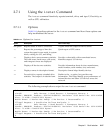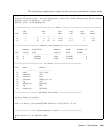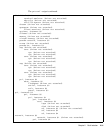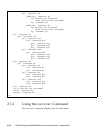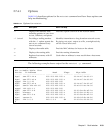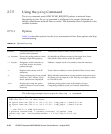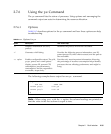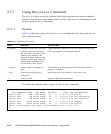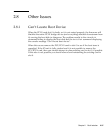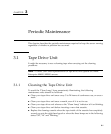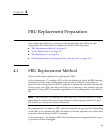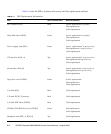
Chapter 2 Fault Isolation 2-35
2.7.6 Using the ps Command
The ps command lists the status of processes. Using options and rearranging the
command output can assist in determining the resource allocation.
2.7.6.1 Options
TABLE 2-17 describes options for the ps command and how those options can help
troubleshooting.
The
following example shows output for one ps command.
Note – When using sort with the -r option, the column headings are printed so
that the value in the first column is equal to zero.
TABLE 2-17 Options for ps
Option Description How It Can Help
-e Displays information for every
process.
Identifies the process ID and the executable.
-f Generates a full listing. Provides the following process information: user ID,
parent process ID, time when executed, and the path to
the executable.
-o option Enables configurable output. The pid,
pcpu, pmem, and comm options
display process ID, percent CPU
consumption, percent memory
consumption, and the responsible
executable, respectively.
Provides only most important information. Knowing
the percentage of resource consumption helps identify
processes that are affecting performance and might be
hung.
# ps
PID TTY TIME CMD
101042 pts/3 0:00 ps
101025 pts/3 0:00 sh
#



